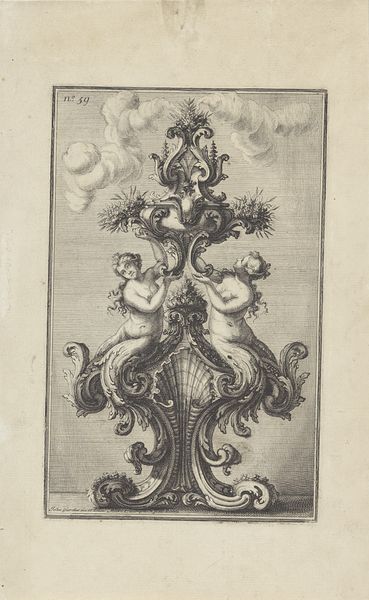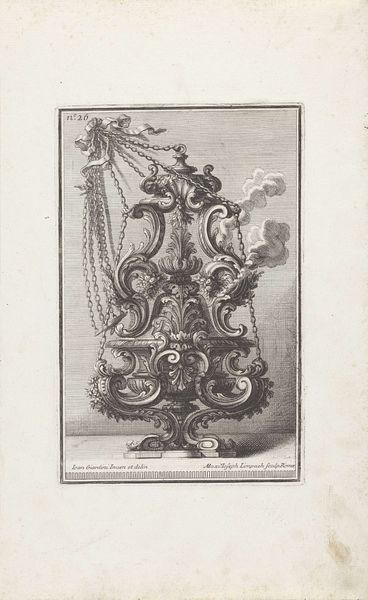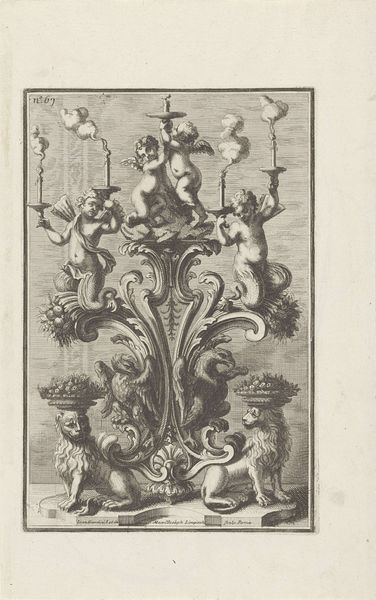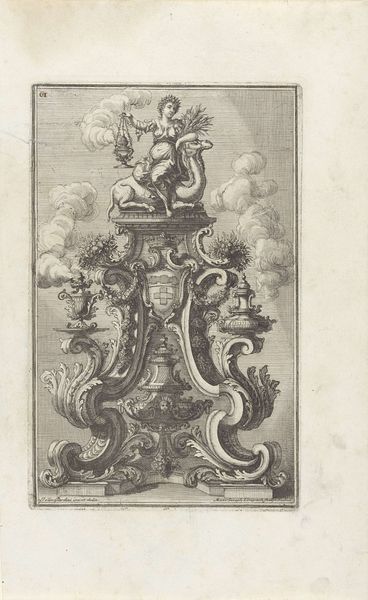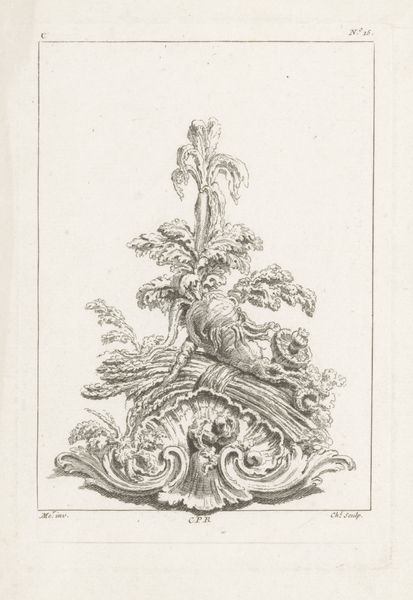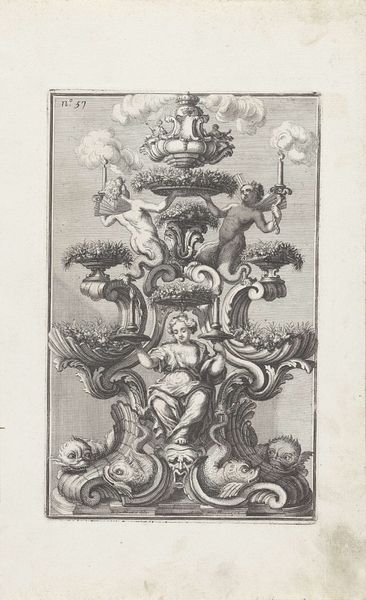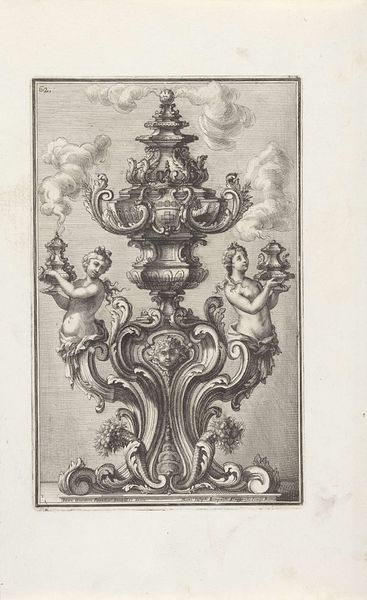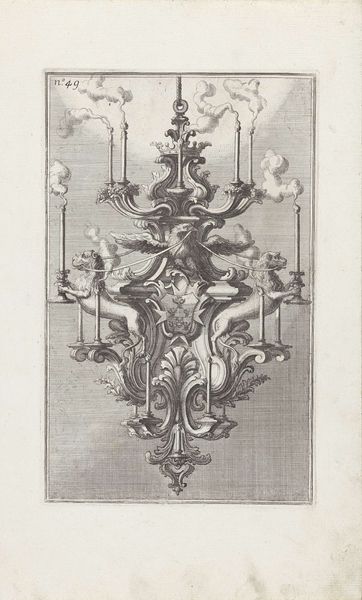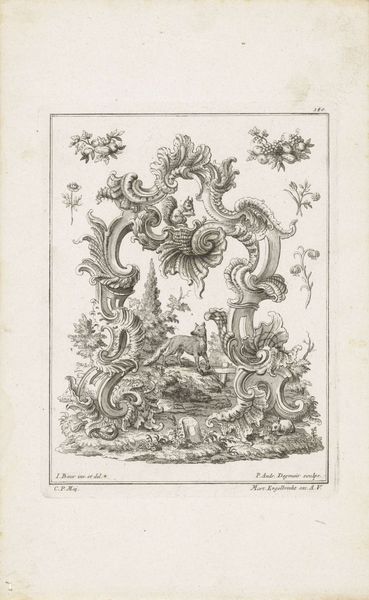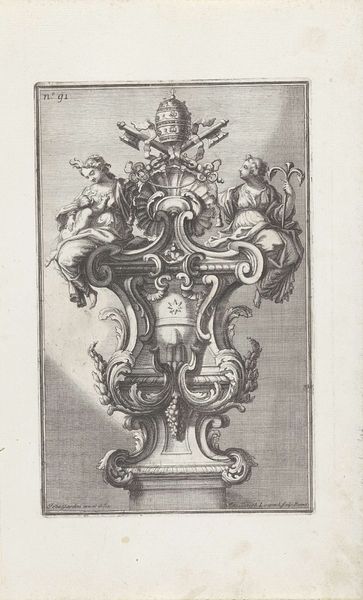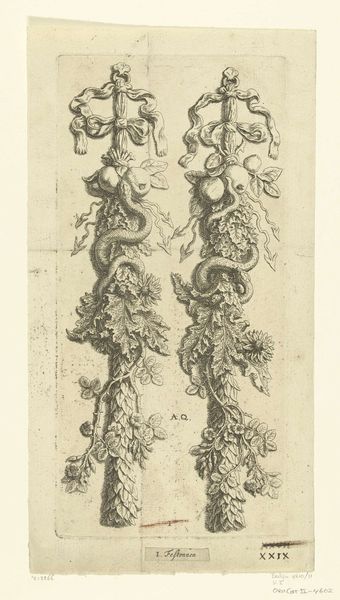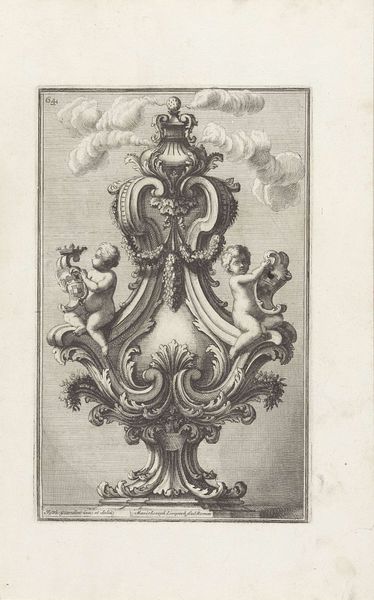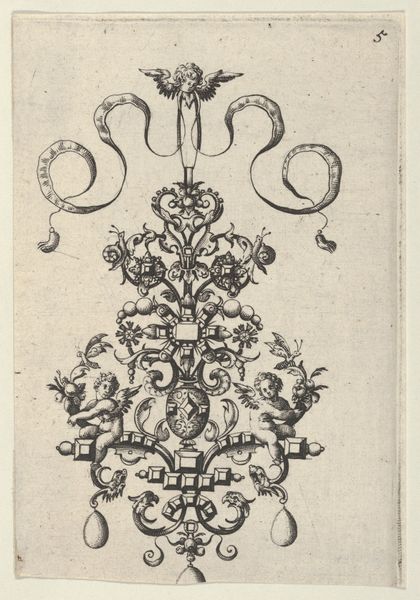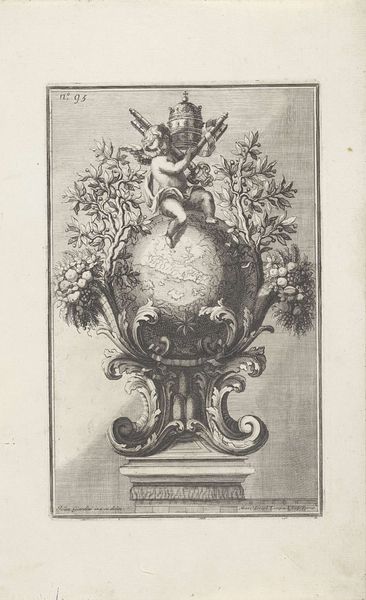
ornament, engraving
#
ornament
#
baroque
#
figuration
#
line
#
decorative-art
#
engraving
Dimensions: height 272 mm, width 172 mm
Copyright: Rijks Museum: Open Domain
Editor: This is Maximilian Joseph Limpach’s engraving, "Ornament met tritons, dolfijnen, schelpen en bloemen," from 1714. The amount of detail is incredible, and it has such a playful feel. What do you see in this piece, from your perspective? Curator: From a formalist viewpoint, it's fascinating how Limpach utilizes line and form to create depth and dynamism within a primarily two-dimensional medium. The repeated motifs of marine life – tritons, dolphins, shells – generate a rhythm that guides the eye upwards through the composition. Notice the baroque style of the swirling elements and their intricate connections; How do those lines convey motion? Editor: Now that you point it out, the consistent curvature in each layer builds toward the top and definitely suggests motion. The dolphins on top really sell that. Curator: Exactly. Observe also how the artist manipulates light and shadow through hatching and cross-hatching. These techniques define the contours of the figures and create a sense of volume despite the print's inherent flatness. Note that it’s called an ornament. Where do you see examples of ornamental composition within this etching? Editor: It's certainly rich with decorations! The flowers in the central basin feel extra ornamental against the marine life, and there’s so much fine detail throughout. But the shells, dolphins, and tritons feel like they're integral to the piece. Curator: The arrangement of forms—spiraling from a broad base to a complex apex—suggests careful construction rather than pure decoration. But, consider how those elements integrate – how shape, and density of line work within the composition to produce visual intrigue. Editor: I now realize that the composition drives the ornamental aspects as opposed to the ornamental aspects driving the composition. This definitely gave me a different way of thinking about engravings. Curator: Precisely. Close attention to these elements of visual construction allows us a far greater understanding of Limpach's artistic choices and accomplishments in conveying baroque grandeur.
Comments
No comments
Be the first to comment and join the conversation on the ultimate creative platform.
